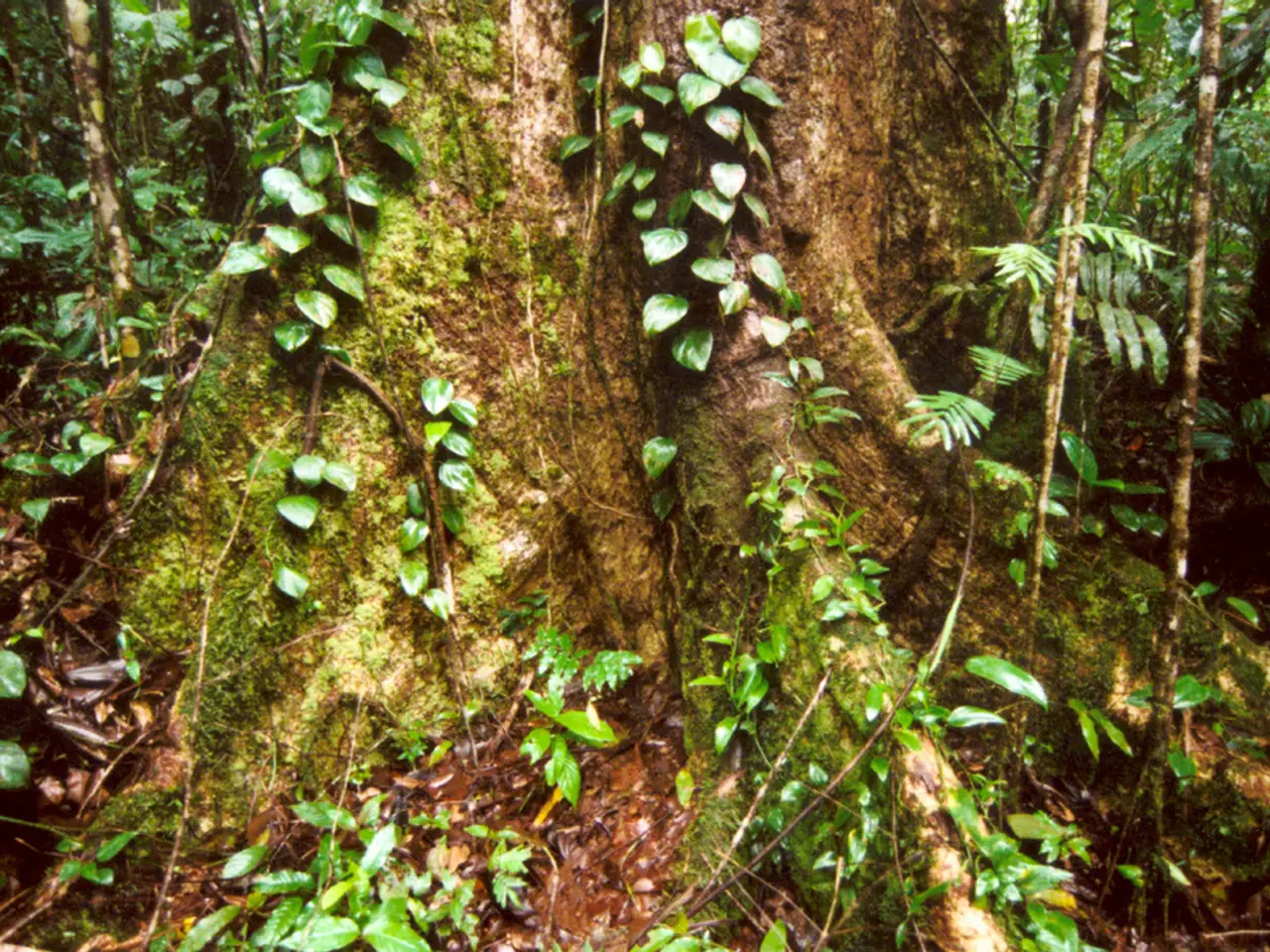Establishing a Humid Atmosphere for Bonsai Root Development through Air Layering
Mastering Bonsai Air Layering with Sphagnum Moss
Bonsai enthusiasts often seek ways to propagate their beloved plants, and one popular method is air layering. This technique involves using sphagnum moss to stimulate root growth on a branch, ultimately creating a new bonsai. Here's a step-by-step guide to successful bonsai air layering with sphagnum moss.
Preparing the Girdled Branch
The process begins by selecting a healthy, flexible, and mature branch. It should be strong enough to support root growth but not overly woody. Make two circular cuts (girdling) around the branch about 1 to 1.5 inches apart, then remove the bark between these cuts down to the white inner cambium layer. A shallow upward cut in the exposed area can encourage root formation. For added stimulation, apply rooting hormone to the exposed area.
Applying the Sphagnum Moss
Use pre-moistened sphagnum moss. It should be moist but not dripping wet. Squeeze out excess water so the moss is damp but holds moisture well. Wrap the moistened moss tightly and evenly around the wounded area, ensuring it stays in close contact with the exposed cambium tissue.
Securing the Moss Wrap
Cover the moss with a moisture barrier such as black plastic film or a plastic bag tied tightly, ensuring it is sealed to prevent moisture loss and protect roots from light exposure. Optionally, bind the whole wrap firmly with raffia, tape, or string for extra security.
Maintaining Moisture Levels
Monitor the moss regularly to keep it moist but avoid soaking. The plastic wrap helps retain moisture and darkness, essential for root development.
Monitoring Root Development
Roots typically take several weeks to a few months to develop, depending on the species and conditions. Check periodically by gently feeling the wrap or, if transparent plastic is used, visually inspecting for roots through the film. Once a healthy root mass has developed, cut the branch below the root ball and plant it in a suitable soil mix.
Caring for Your New Bonsai
After separation, keep the new plant shaded and maintain moisture as roots establish. Healthy roots appear white or light-coloured, whereas brown or black roots may indicate rot or decay. Increased moisture retention, swelling, or the appearance of fine roots indicate successful root development.
Air layering is a relatively low-stress technique that minimizes harm to the parent tree. Consistency in watering is essential for the perfect balance of bonsai moisture. Regularly inspect the moss wrap for pests and diseases, and promptly treat any issues with organic pest control methods or fungicides. It's generally not recommended to air layer multiple branches simultaneously as it can cause excessive stress to the parent tree.
Longer roots provide a more extensive network for nutrient uptake, supporting the new bonsai's growth. A higher density of roots indicates a stronger root system, increasing the chances of a healthy, thriving bonsai. Overwatering can lead to root rot, so water thoroughly but avoid overwatering.
Alternative materials like coconut coir, peat moss, or even cloth can be used for air layering, but their water retention and aeration properties may vary. The ideal moisture level for bonsai is maintained by inspecting the moss wrapping every 2-3 days and aiming to water the moss wrapping every 2-3 days or when it feels dry to the touch.
In summary, successful bonsai air layering with sphagnum moss requires careful girdling to expose cambium, applying moist (but not wet) moss tightly around the wound, securely wrapping it with plastic to maintain moisture and darkness, and patience to allow roots to develop before separation. With the right techniques and care, you can create new bonsai from your existing plants.
Embracing Home-and-Garden Projects
After mastering bonsai air layering with sphagnum moss, you might find yourself interested in other home-and-garden DIY projects, such as gardening or refurbishing garden décor.
Enhancing Lifestyle with Bonsai Collection
By successfully propagating bonsai using air layering techniques, you can expand your collection and transform your lifestyle into one embracing tranquility and connection with nature.




